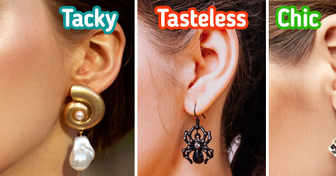Jewelry Styling Tips That May Help You Look Expensive, Not Vulgar

Women’s clothing throughout history held more secrets than you might imagine! From the mysterious power of hand fans to the hidden pockets that carried everything from love letters to sewing kits, history’s fashion has a story to tell. Discover the surprising truth behind the comfort of corsets and the practical purpose of crinolines in this article.
In medieval times, childbirth was considered extremely risky, and women sought protection. A birthing girdle was a special cloth belt or parchment strip that a woman would wear or hold during labor. These girdles were believed to offer protection for both the mother and the unborn child.
Long before purses became popular, women cleverly stored their essentials in pockets worn under their dresses. These cloth pockets were tied around the waist and accessed through hidden slits in the outer skirts. Women could carry everything from money and sewing kits to love letters, all tucked safely under their voluminous gowns.
A simple hand fan could become a powerful communication tool. The way a woman held, opened, snapped shut, or fluttered her fan could send subtle (and sometimes scandalous) messages across a crowded ballroom. Specific gestures had agreed-upon meanings, like holding a fan near the heart to signal affection or fanning slowly to show that the woman is married.
While crinolines are famous for creating giant, bell-shaped skirts, they actually served a practical purpose as well. Before crinolines, women wore multiple heavy petticoats to achieve volume, which made dressing extremely hot and cumbersome. The crinoline, made of lightweight hoops, lifted the skirts away from the body, allowing air to circulate and making it much cooler, especially in summer months.
In the past, women’s swimsuits were essentially full-length dresses crafted from wool or flannel. These garments were often paired with stockings, shoes, and hats, offering full coverage of the body, including arms and legs. Designed to maintain a woman’s modesty, these swimsuits were a reflection of the era’s social norms, where revealing any part of the body, including arms and ankles, was considered inappropriate and scandalous.
Sleeves could be swapped out depending on the weather, the occasion, or even just to refresh an outfit’s look. It also seems that a woman could replace just the sleeves if they became worn or dirty, rather than needing an entirely new dress.
Despite popular myths, corsets were often practical rather than instruments of torture. Most women wore them for gentle shaping and back support, much like how we use bras today. Tightlacing for extremely tiny waists did exist, but it was rare and required a long period of training. A properly fitted corset was comfortable and allowed women to work, breathe, and even engage in physical activities without fainting every few steps.
We’re again reminded that thoughtful design—whether in garments or gadgets—has always been the key to making life more enjoyable. Here are some exciting tech developments coming soon that will make your everyday life more convenient and enjoyable than ever! It’s even possible to hug and kiss each other despite the miles between.











